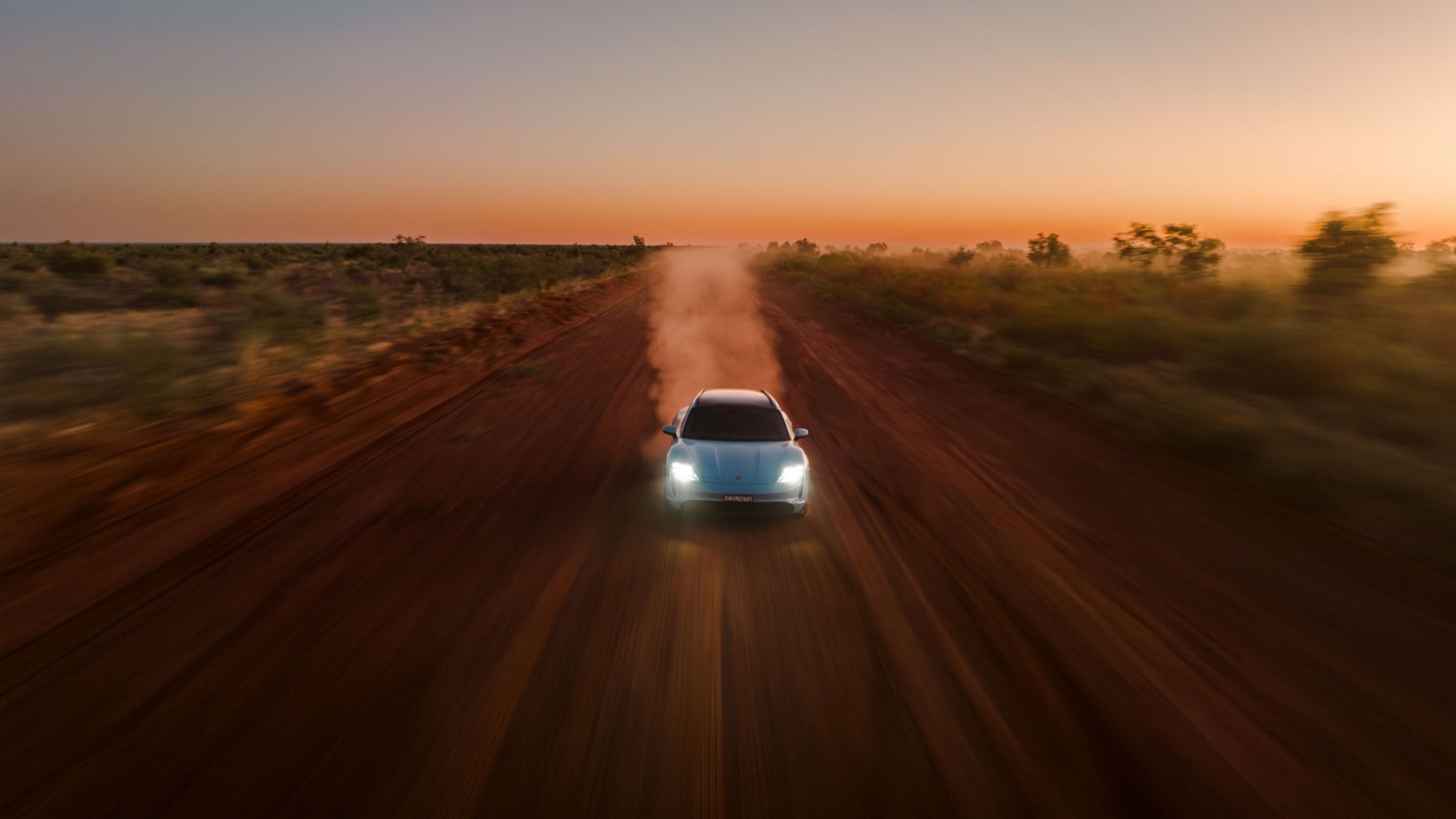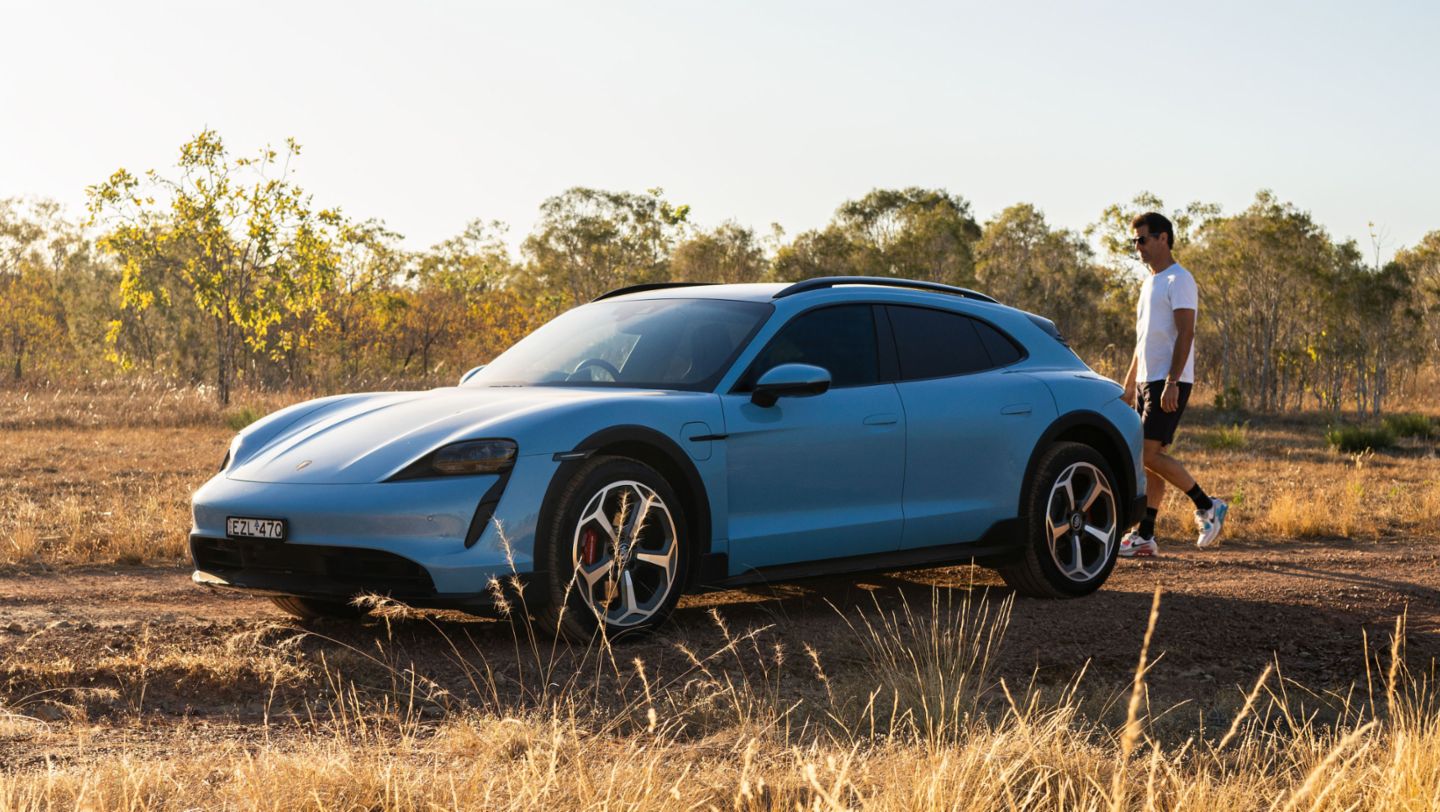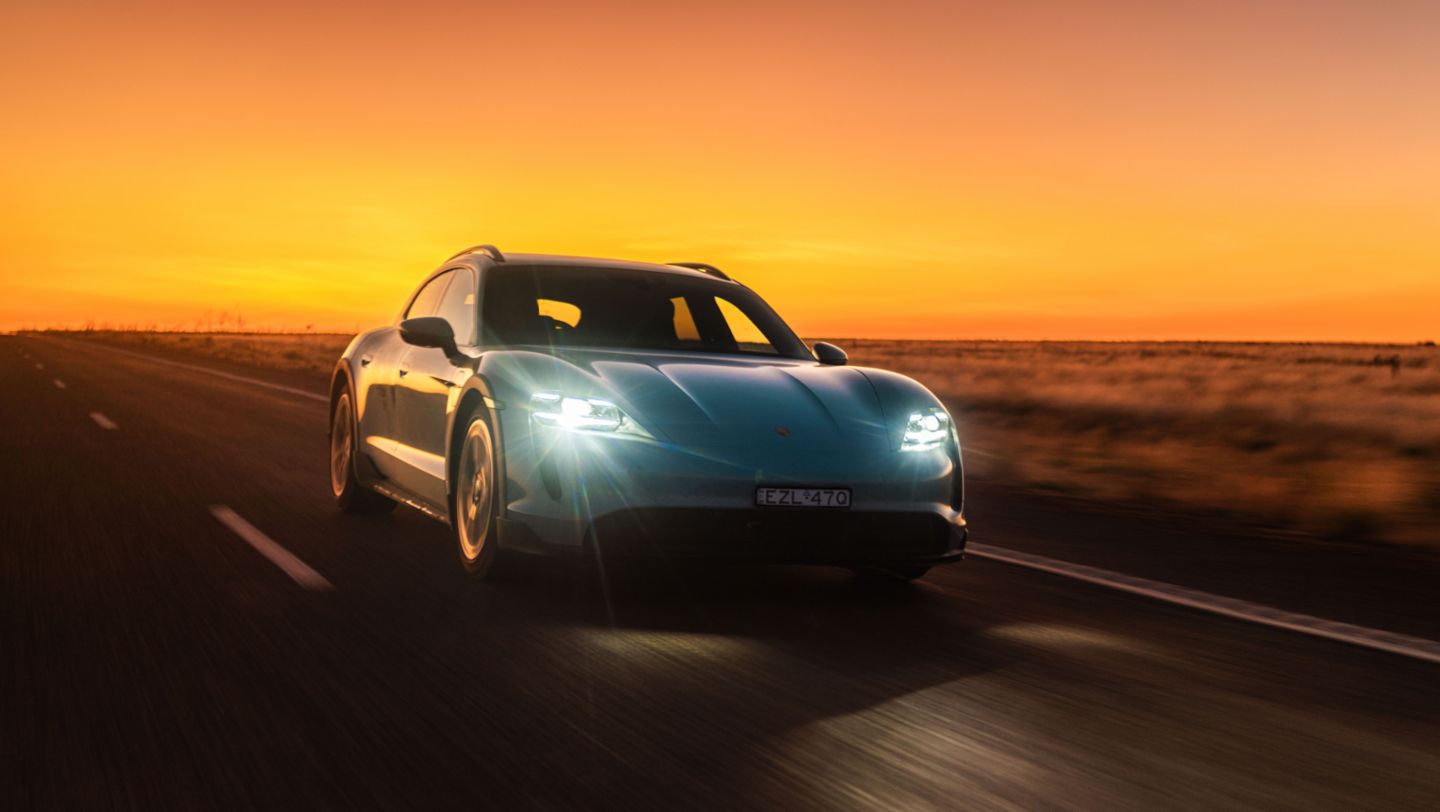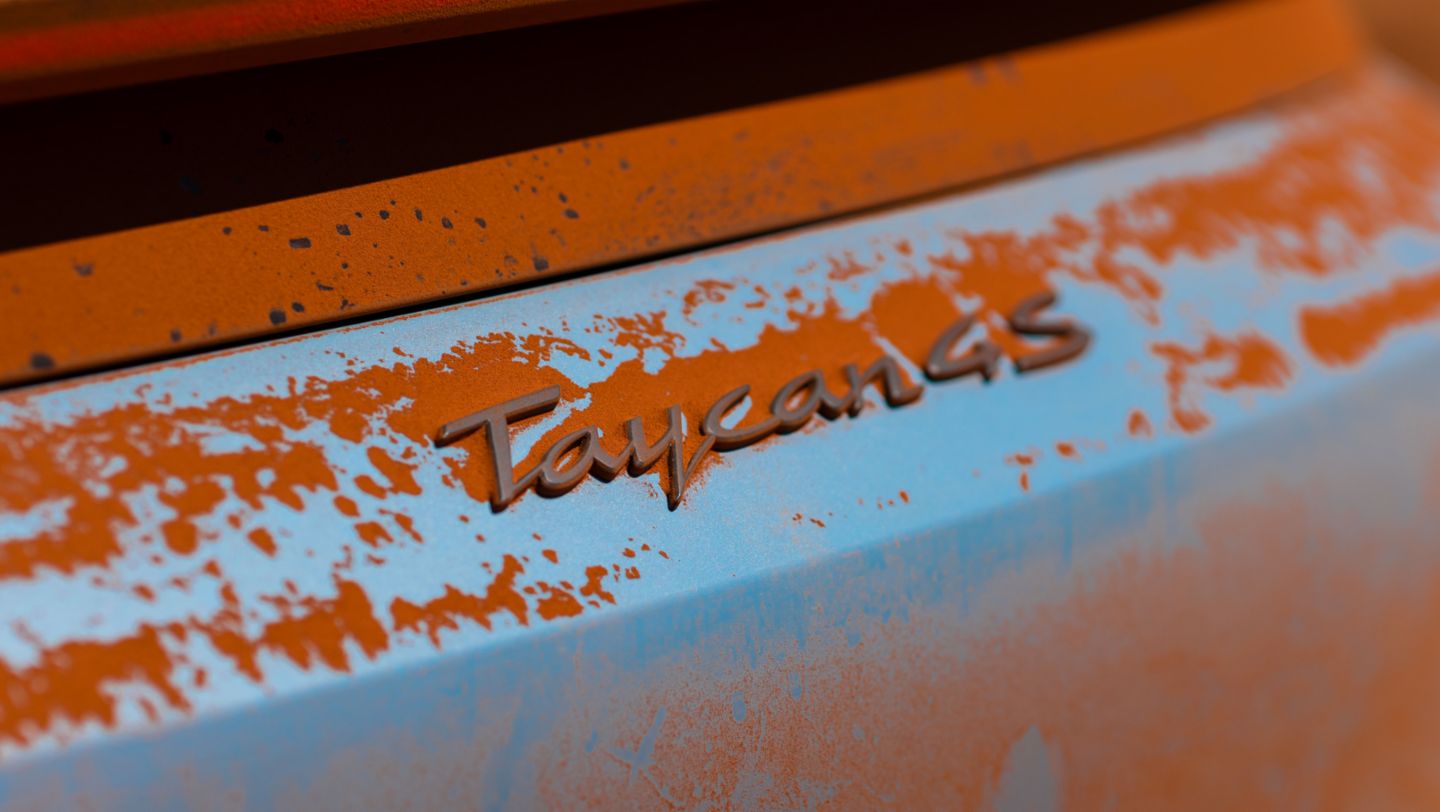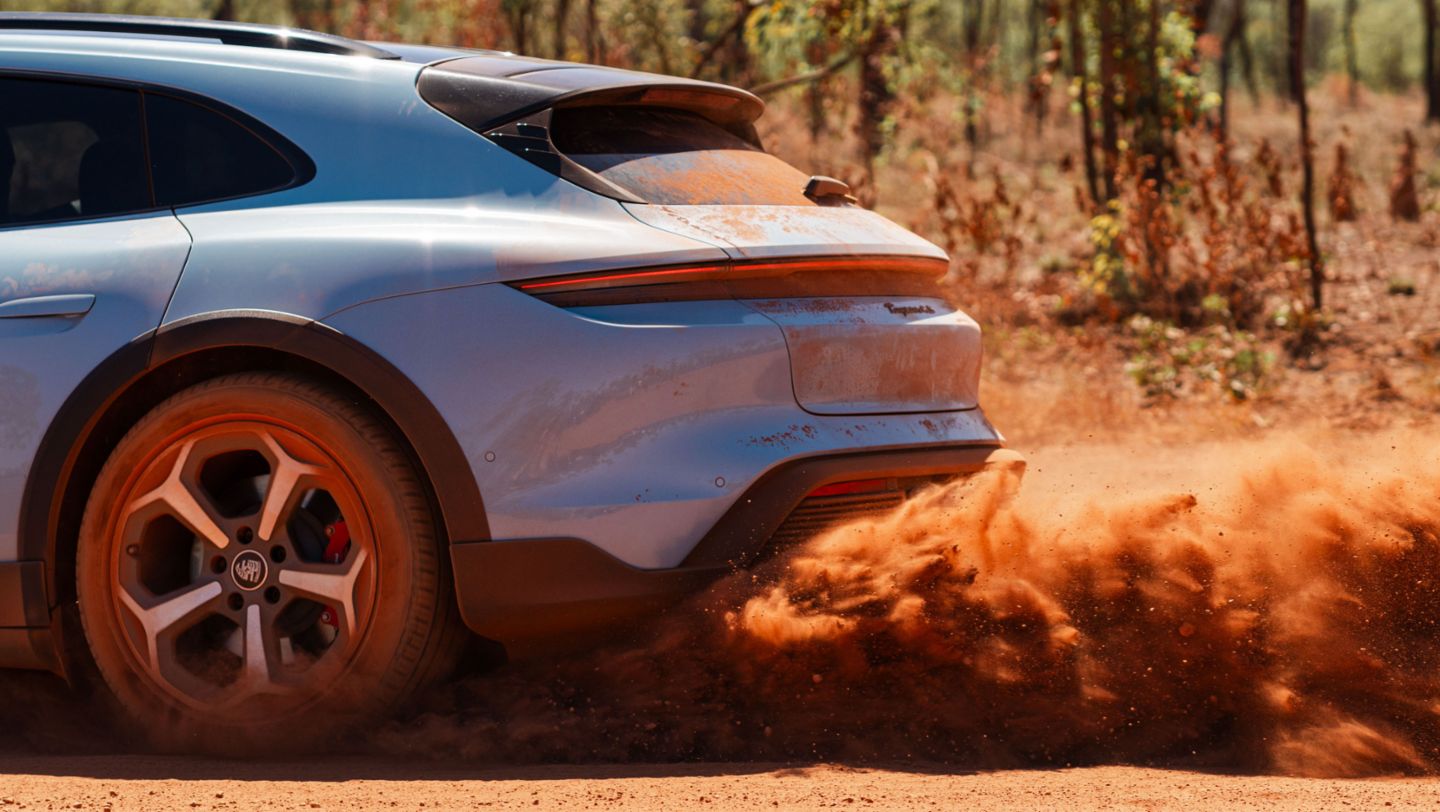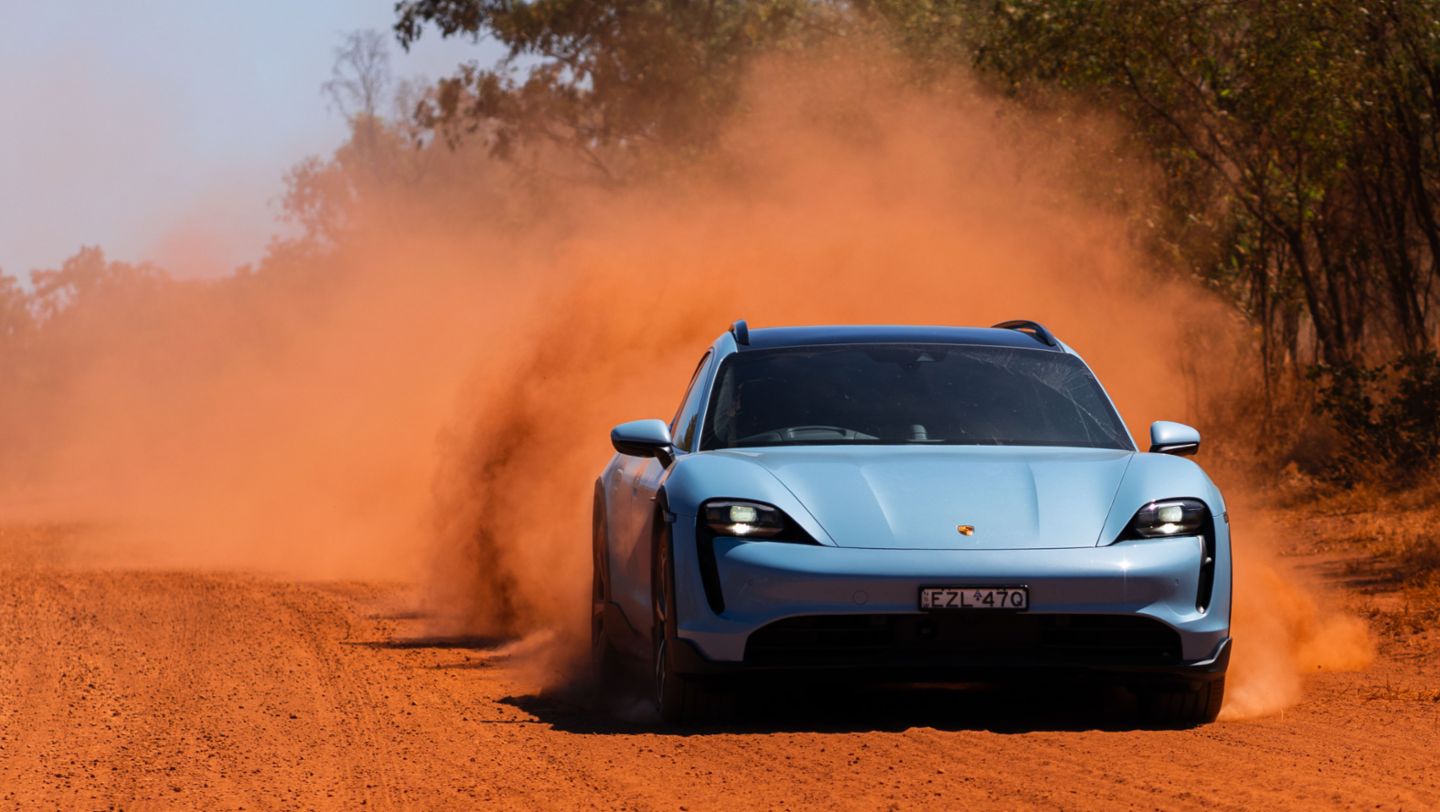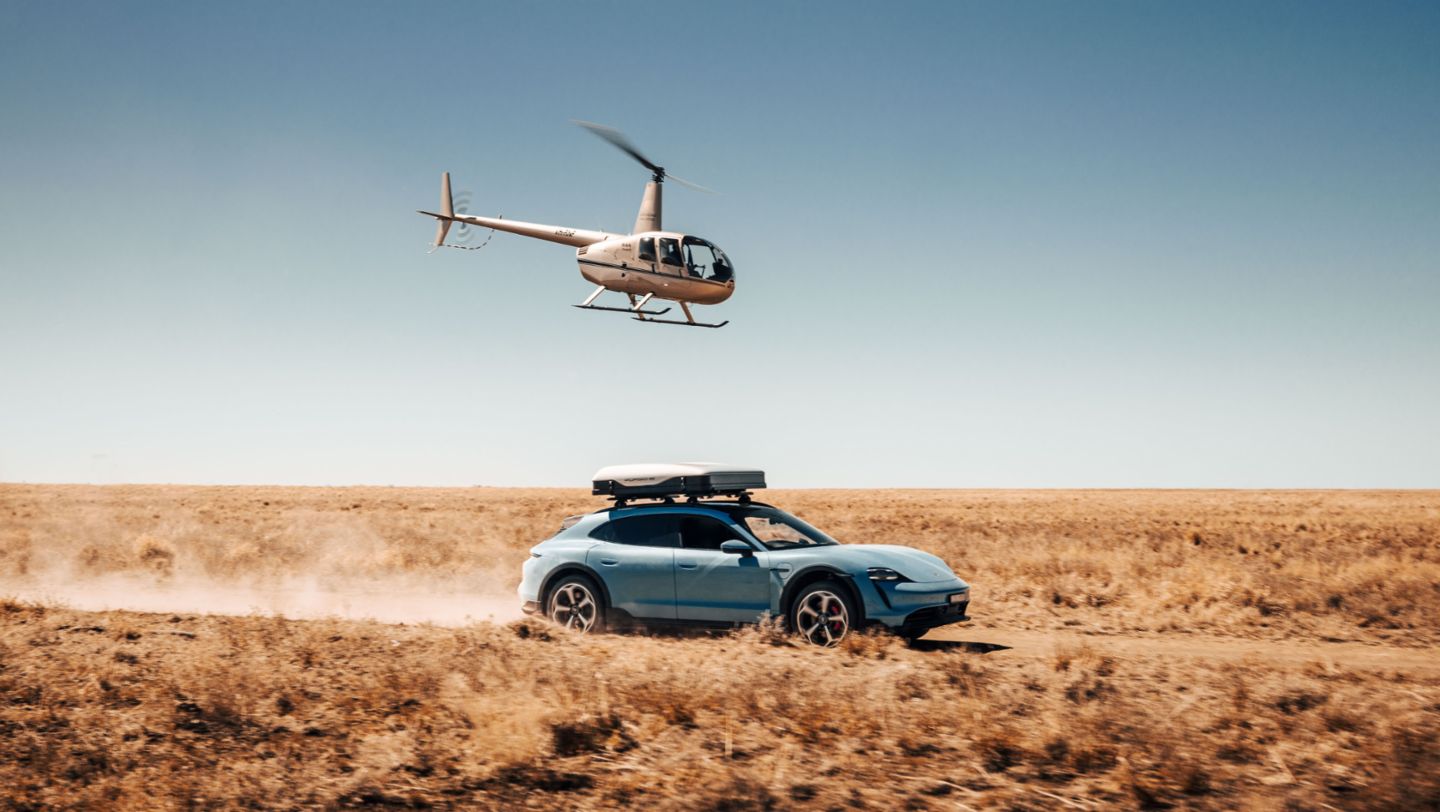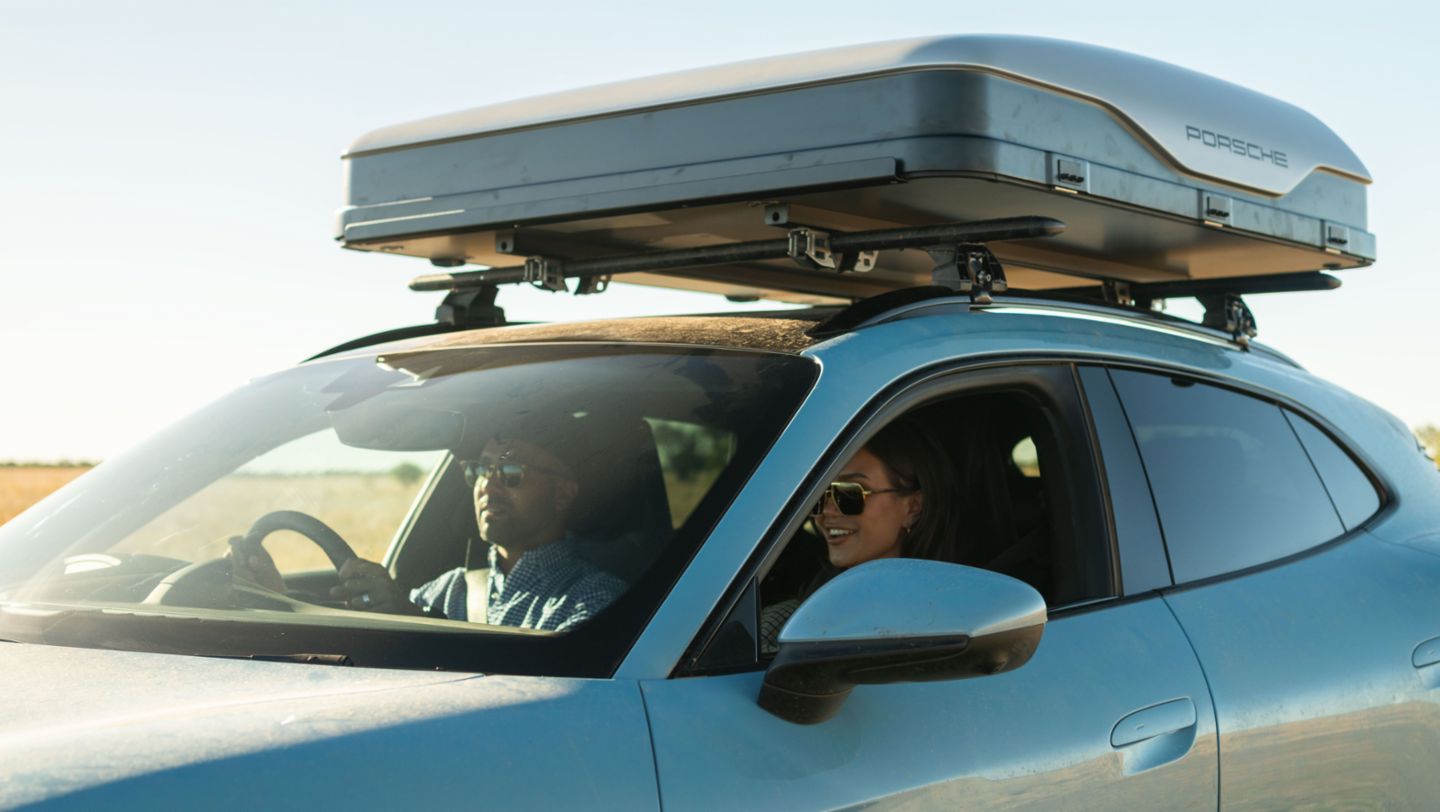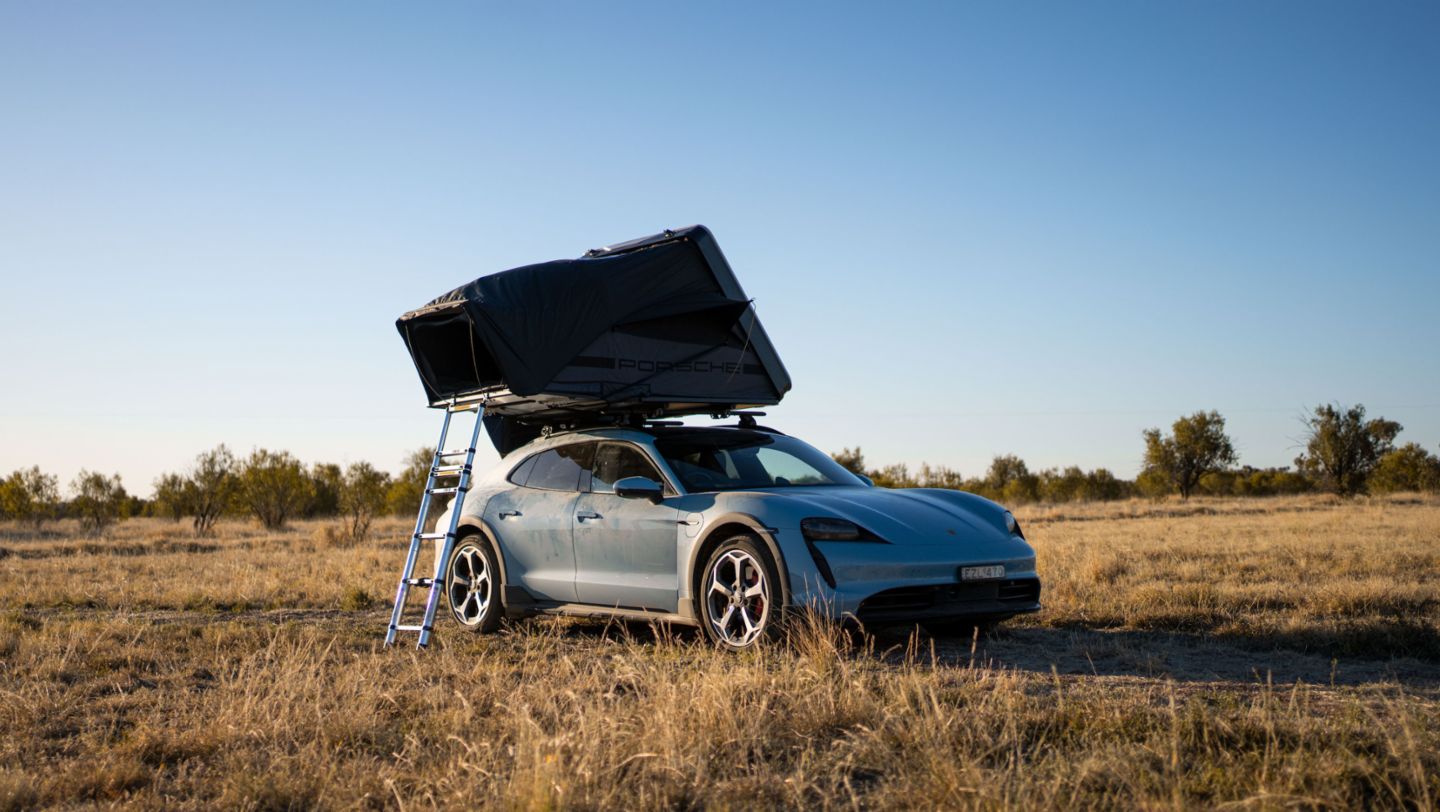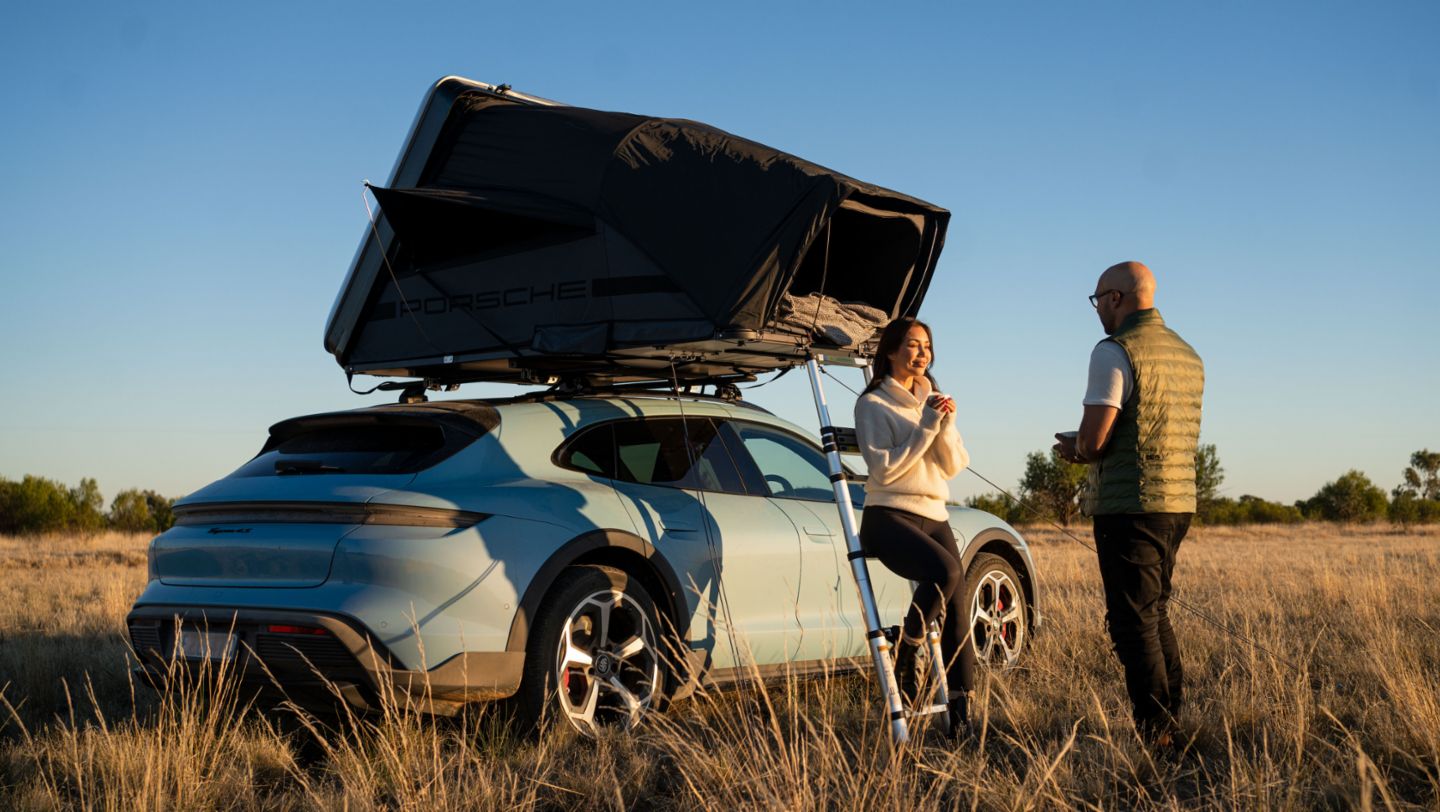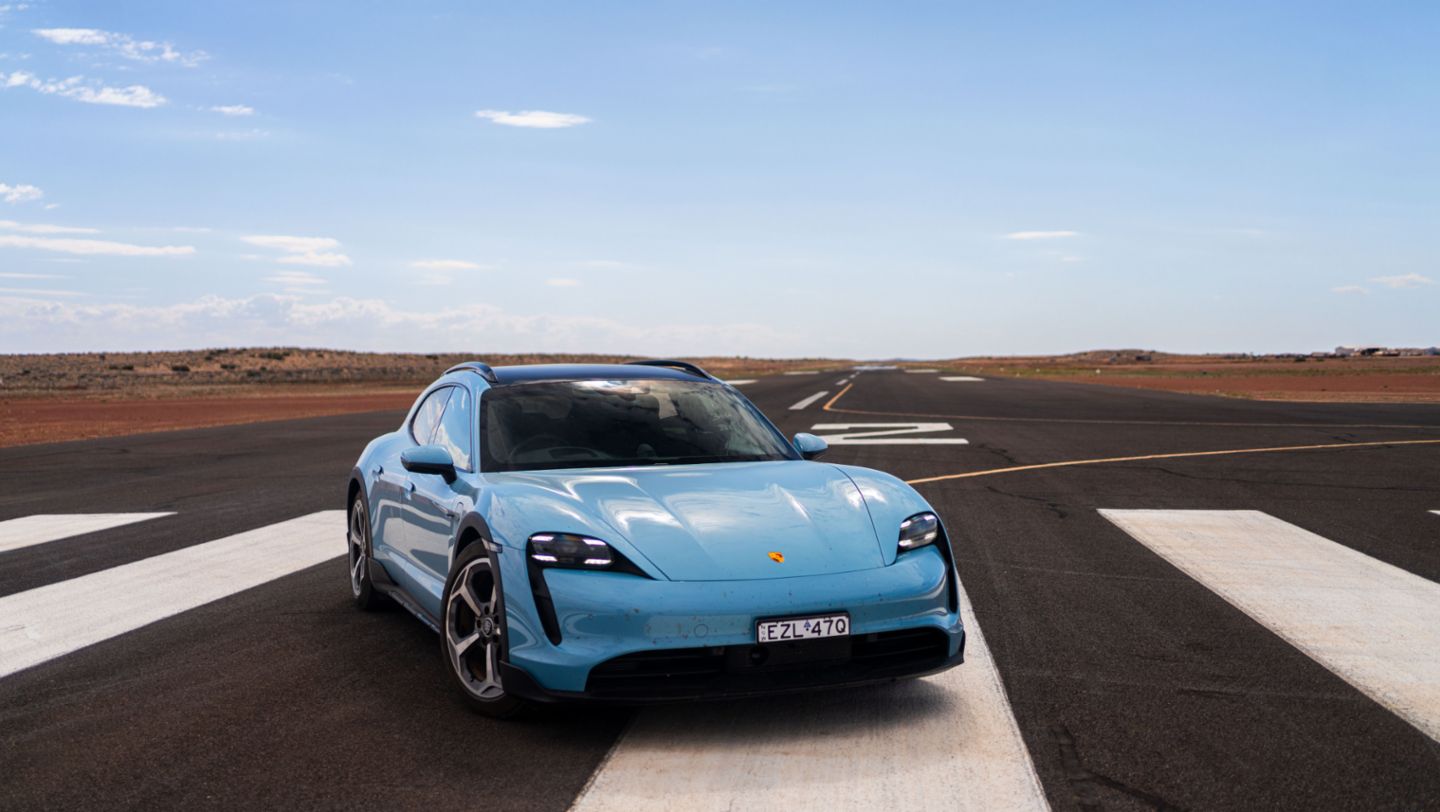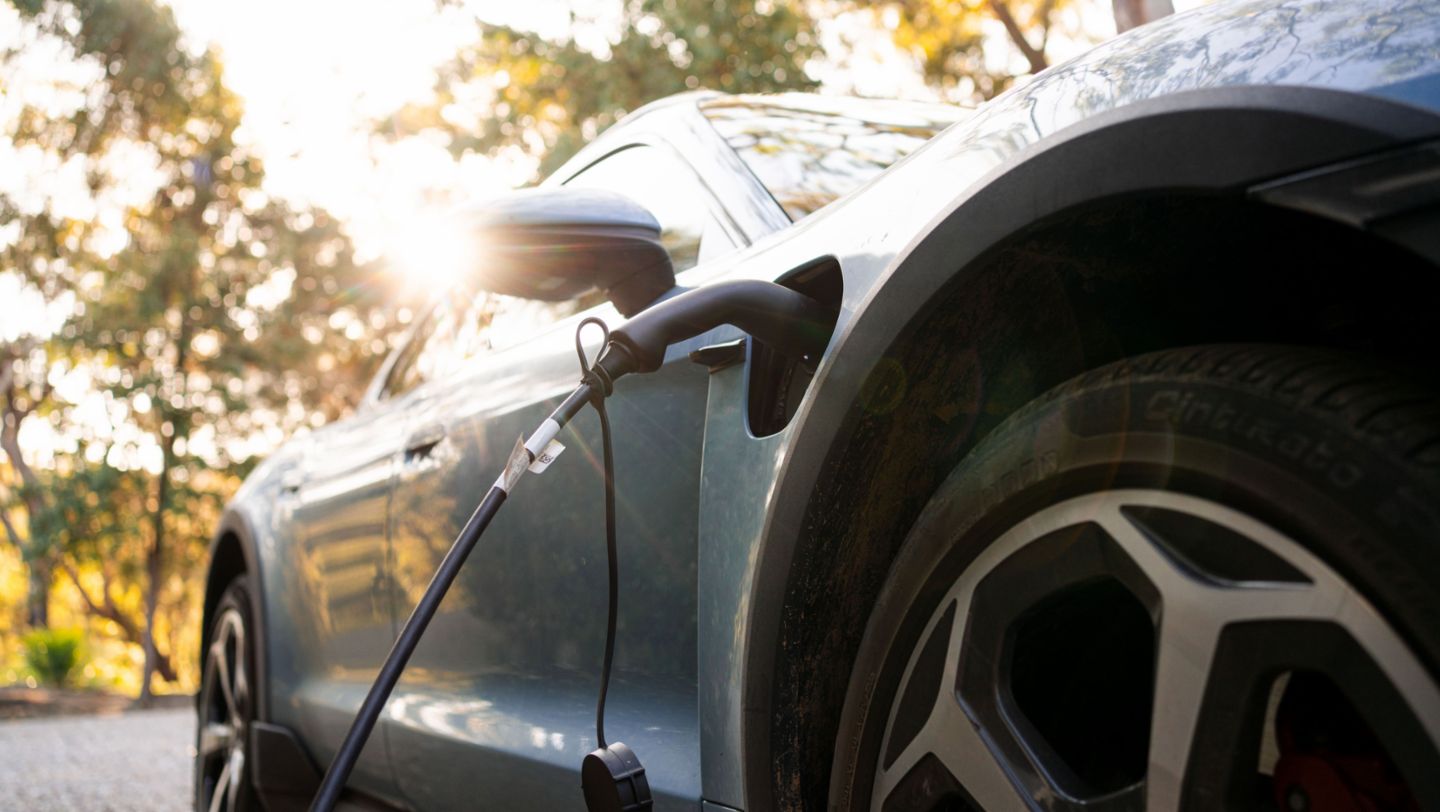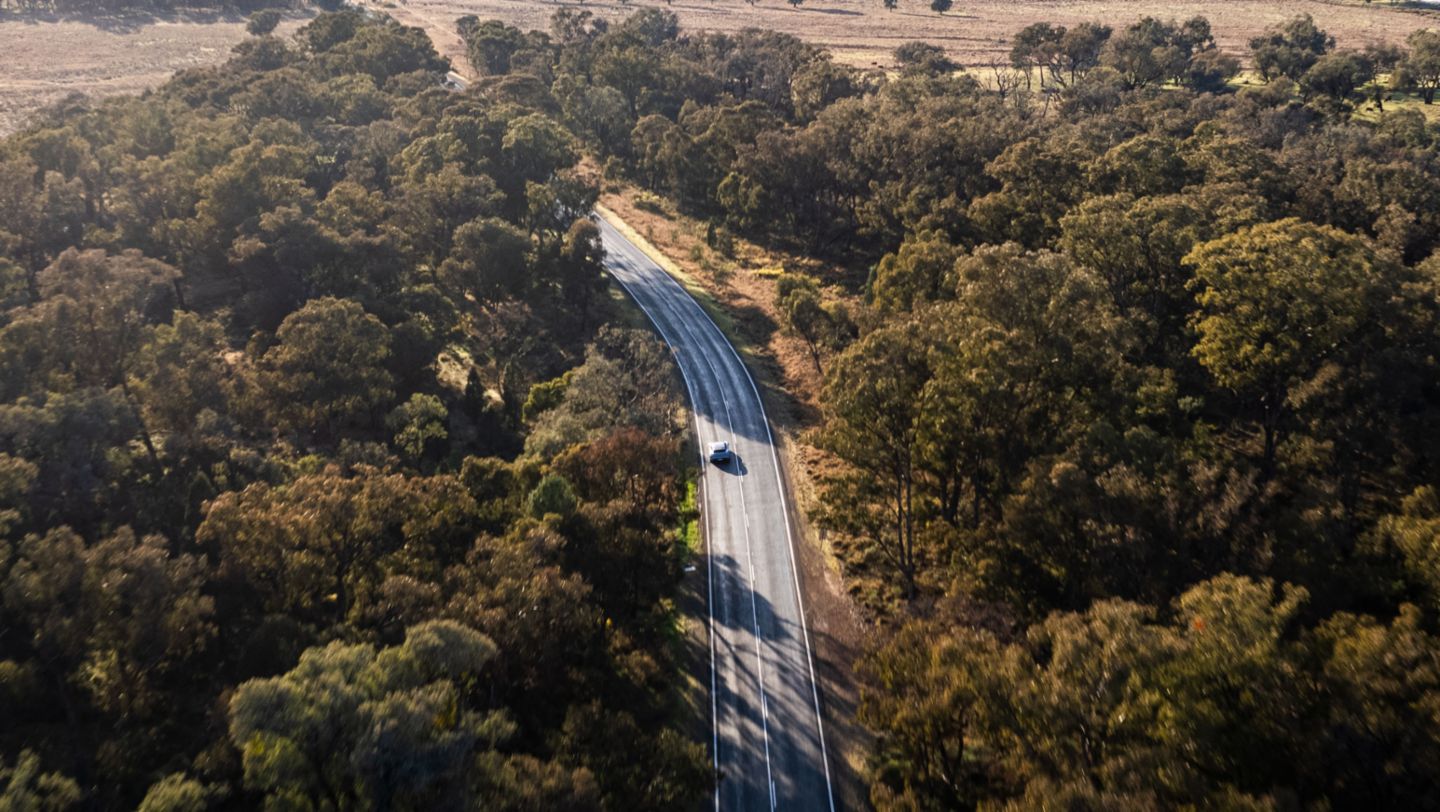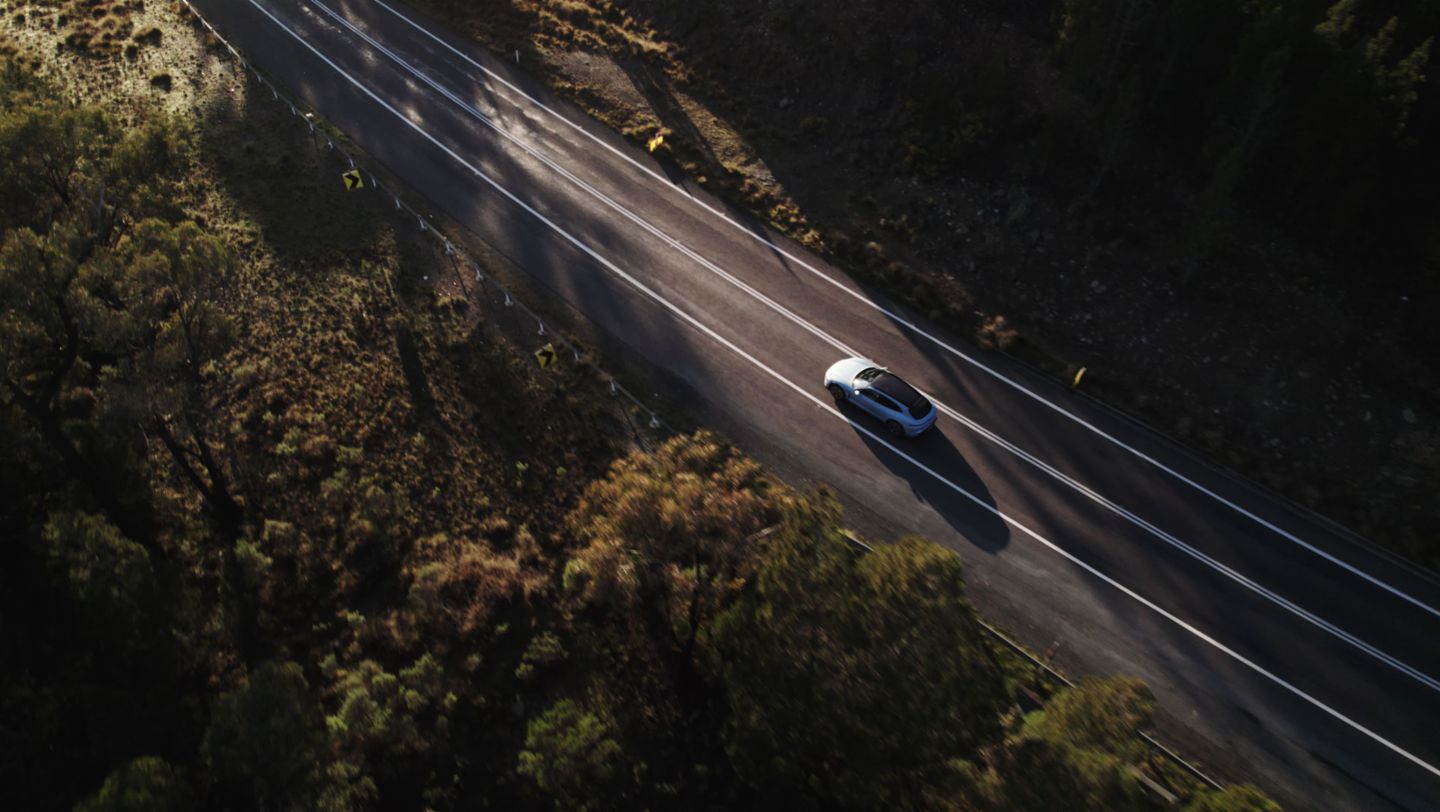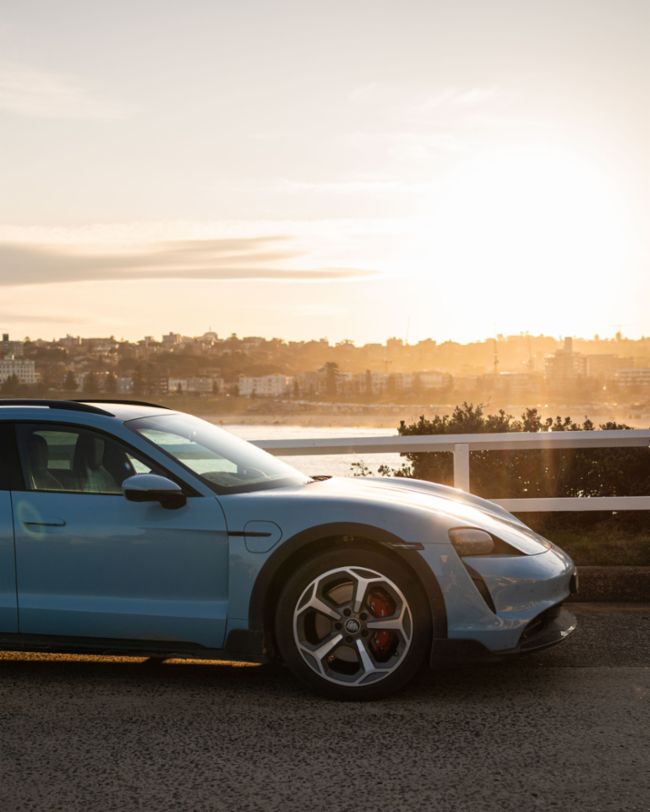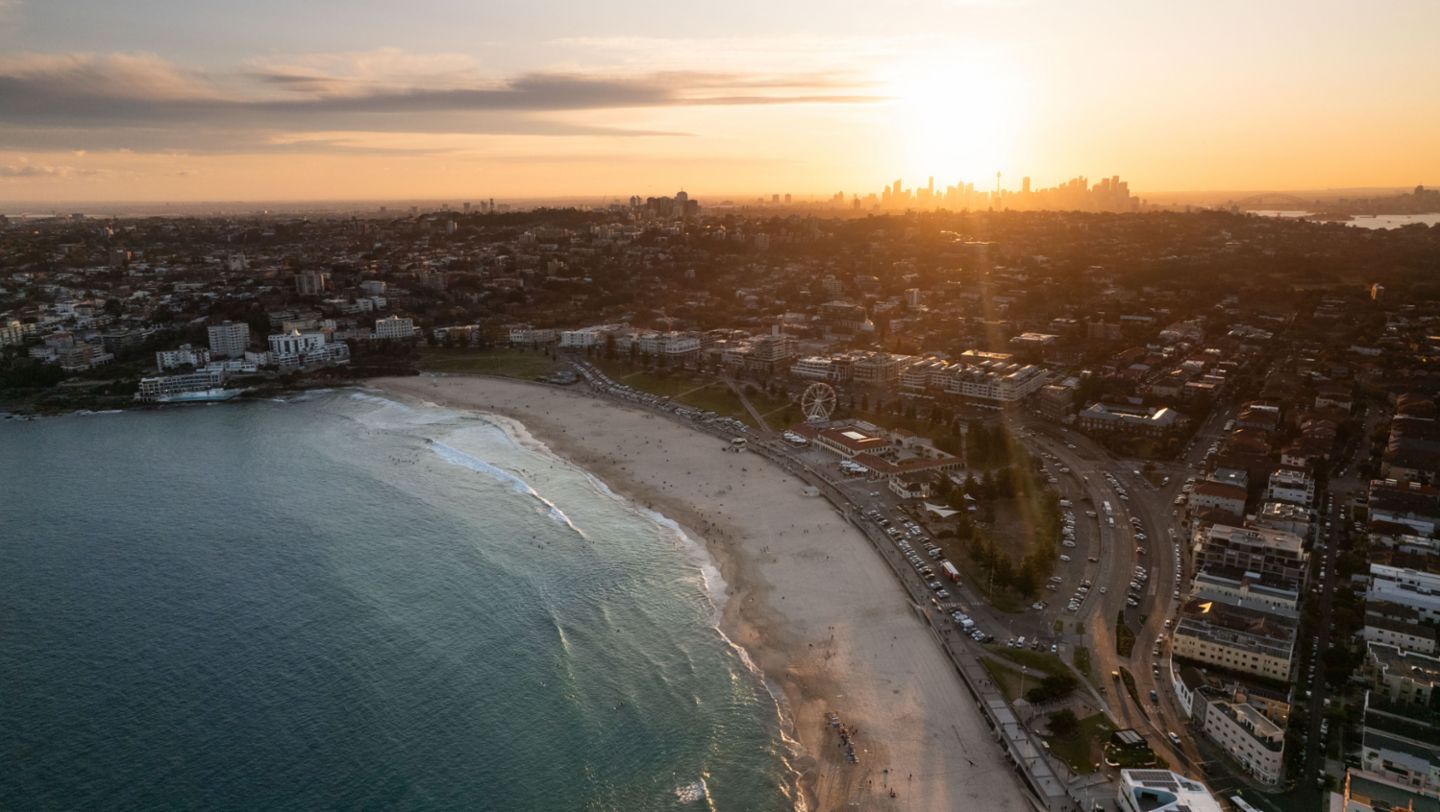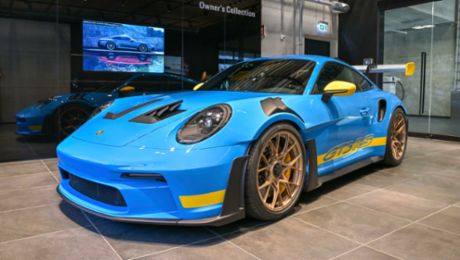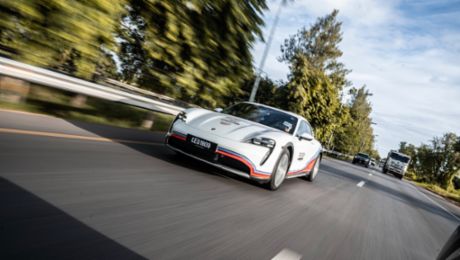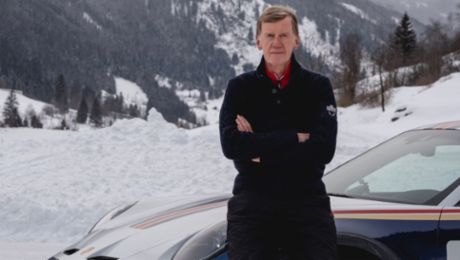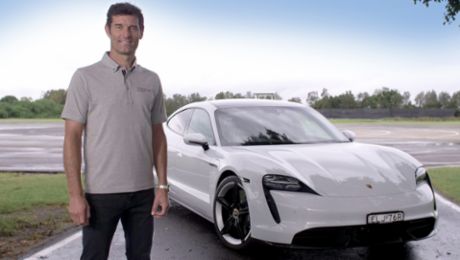Covering a distance of 5,000 kilometres, the adventure was not only a testament to the Taycan’s impressive range and performance but also to the growing network of electric charging infrastructure that is rapidly transforming the way we think about all electric travel.
From the Northern Territory to the iconic Bondi Beach
The expedition incorporated a vast array of charging options from outback cattle stations, to fast charging stations and Porsche Destination Charging. The Taycan 4S Cross Turismo, equipped with its cutting-edge battery technology, showcased its remarkable endurance and efficiency as it navigated through diverse terrains, off road adventures and a range of weather conditions during the three-week drive from the Northern Territory to the iconic Bondi Beach in Sydney. Configured with the optional 22kw on-board charger, the Taycan 4S Cross Turismo was able to optimise charging times in remote locations. The 19-day journey included 27 charging stops and within the three weeks a total of 85 hours was spent charging, which was mostly completed overnight.
Destinations enroute included Nitmiluk National Park and the majestic Nitmiluk (Katherine) Gorge in the Northern Territory, endearing country town Daly Waters, a successful assent of the infamous Simpson Desert sand dune ‘Big Red’ in Queensland, as well as a stopover at the heartland of Porsche Carrera Cup Australia, the Bathurst Racetrack, followed by the stunning winding roads of the Blue Mountains, before heading towards the wild surf at Bondi Beach, New South Wales.
Throughout the journey, the Porsche Taycan 4S Cross Turismo demonstrated the seamless integration of electric vehicles into our everyday lives, proving that electric road trips are not only feasible but also enjoyable.
Porsche wants to continue with its ambitious electrification strategy. The all-electric Macan has reached the home straight and will be available to customers in 2024. The all-electric 718 is expected to be available for purchase next. It will be followed by the all-electric Cayenne.
165 Porsche Destination Chargers across 87 locations
"The technology in the all-electric Porsche Taycan has proven its performance capabilities under difficult conditions and as the charging infrastructure further expands, electric vehicles are becoming more popular than ever, reshaping how Australians travel on their roads,” said CEO and Managing Director of Porsche Cars Australia, Daniel Schmollinger. In Australia, there are currently 165 Porsche Destination Chargers across 87 locations, and the Official Porsche Centres’ ultra-rapid DC chargers are among the fastest charging stations available in Australia (up to 350kW).
“Embracing the spirit of exploration, the Taycan Cross Turismo redefines on this all electric trip the very essence of reduced impact adventure. The Taycan Cross Turismo offers a thrilling driving experience while exploring nature. This is how Porsche captures the hearts of Australians."
The journey commenced with brand ambassador, former Formula One driver and endurance racing champion, Mark Webber behind the wheel of the Taycan 4S Cross Turismo. Daniel Schmollinger commented "There’s no one better to experience the Taycan with than Mark Webber. He understands the performance capabilities of this car and has a deep respect for how Porsche is pushing the boundaries of electric mobility. Mark’s passion for both cutting edge technology and Australia made him the perfect guide”.
